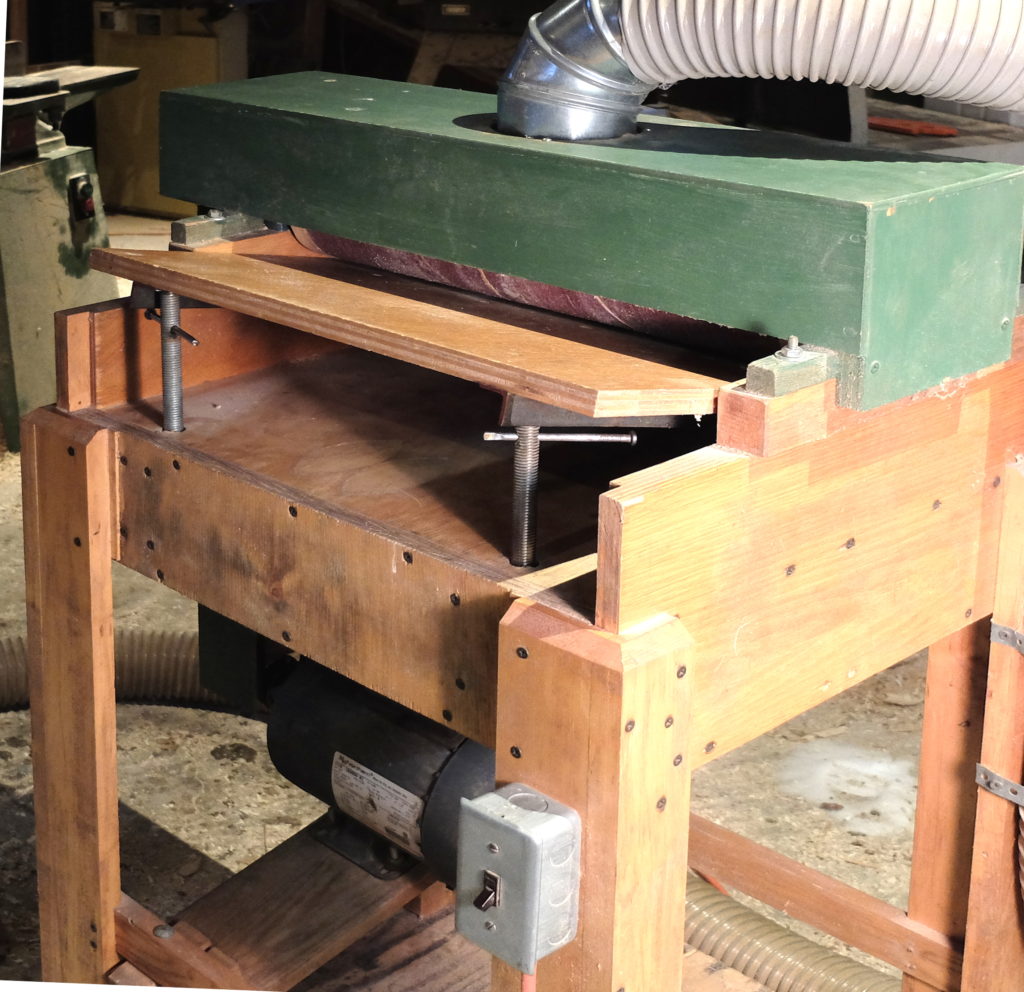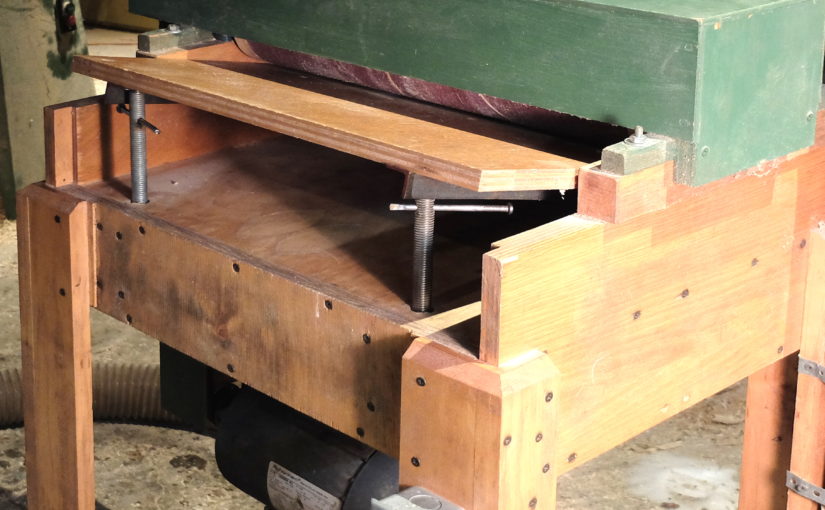My thickness sander is one of the tilting-table variety that lots of people make, and it continues to serve me well allowing for thicknessing delicate and/or figured wood to very tight tolerances. It has some limitations – material width limited to about 17″, single grit that is not easily changed, maximum stock removal rate of about .010″ per pass – but I’ve found it a functional alternative to a $1,000-plus machine. It produces accurate results far beyond what might be expected from its simple design and wooden construction. I include pictures below of some details.
The table beneath the rotating drum has a piano hinge at the back. Below – view of the sander from the outfeed side, with the dust hood on, showing the piano hinge, the dust hood and the hinged dust flap.
On the infeed side, the table is elevated on two jack screws. This lets me fine tune the thickness and compensate for any irregularity side-to-side. 
The underside of the table is reinforced with angle-iron so the jack screws rest on steel, and the table underneath the drum is stiffened.
The drum itself is made of 3/4″ softwood plywood discs cut out on a jig on the bandsaw – the jig is just a fixed pin that the disc were rotated around. The discs were glued together on the 3/4″ steel shaft and pinned to the shaft. Bearings are self-centering pillow block ball bearings, and the shaft is fixed in place with stop collars. I assembled the drum and the table and did the final truing of the drum on the machine, using sandpaper on the table to true the drum.
The drum was sized to use standard 6×48″ belts, 4-7/8″ diameter and 18-3/4″ long. I normally run a 60 grit belt which is glued with contact cement and taped at the ends. The motor is 1 HP 1,725 RPM with a 2-1/4″ pulley driving a 4″ pulley at the drum, giving about 3,000 RPM drum speed.
The green paint was to suggest a name-brand industrial piece. The 3M flashing tape on the dust hose is to cover the hole the mouse chewed.
